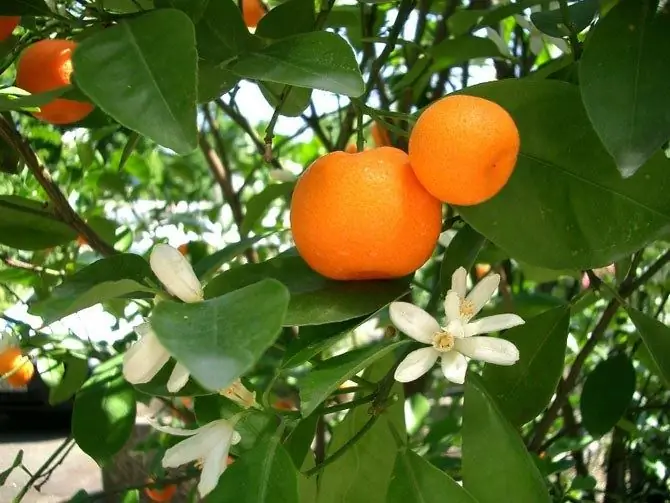In nature, the tangerine tree is quite tall and reaches 4 meters. However, there are undersized varieties of mandarin, satsuma or unshiu, which are successfully grown indoors.

Reproduction of tangerine
Mandarin multiplies by seeds and vegetatively. For planting, you can take seeds from any fruit. Remove them and immediately plant them in a fertile substrate consisting of leafy humus and sand with a small amount of greasy clay. Seedlings appear quite quickly and after a few years become quite lush bushes.
Flowering and fruiting on tangerines grown in this way occurs very late. The process can be accelerated by grafting the plant.
The vegetative method of reproduction is quite laborious, but by propagating tangerines in this way, you will receive fruits much faster in 2-4 years. Make air layers. To do this, select a suitable branch and remove the bark from it about 2 cm wide. Tie this place with moist moss and periodically moisten it as it dries, the substrate should always be wet. After a while, roots should appear at the layer. Cut off a twig and plant in a pot of light soil.
How to care for tangerines
Mandarins, unlike other citrus fruits, are quite unpretentious and require minimal care, but in order to get them to bloom and bear fruit, you need to create certain conditions for the plant.
Light tangerine needs bright, but diffused. Place the pot on an east or west window. Shade from direct light on sunny days.
The plant is moisture-loving. In the spring and summer, it must be watered 1-2 times a day with soft water at room temperature. In winter, watering should be slightly reduced, but the soil in the pot should always be moist, you should not allow the earthen coma to dry out, as the tangerine can throw off the foliage. Spray the plant regularly, especially if the indoor air is very dry.
To achieve the required humidity, pour expanded clay into the pallet and moisten it. Pour some water into the pan as it dries.
During the period of active growth, during budding and fruiting, feed the plants with organic and mineral fertilizers. Use complex fertilizers for citrus fruits, and as organic matter - slurry from cow dung (in a ratio of 1:10).
Plant transplant
Young tangerine bushes need to be replanted annually, and adult plants once every 3 years. The best time for this is spring, at this time the tangerine begins a period of active growth, so the plant will tolerate the procedure very well.
Place a layer of drainage on the bottom of the pot. It can be broken brick, crushed stone or expanded clay. Then add a nutritious yet light citrus substrate. Remove the plant from the old pot, shake off the soil, and rinse the roots in warm water. Remove diseased and rotten tangerines and plant them in fresh soil.
It is quite problematic to replant adult large plants, but you can get by with replacing the top layer of soil in the container. Remove about 5 cm of old soil and add fresh substrate. Compact it slightly and pour warm water over the plant.






